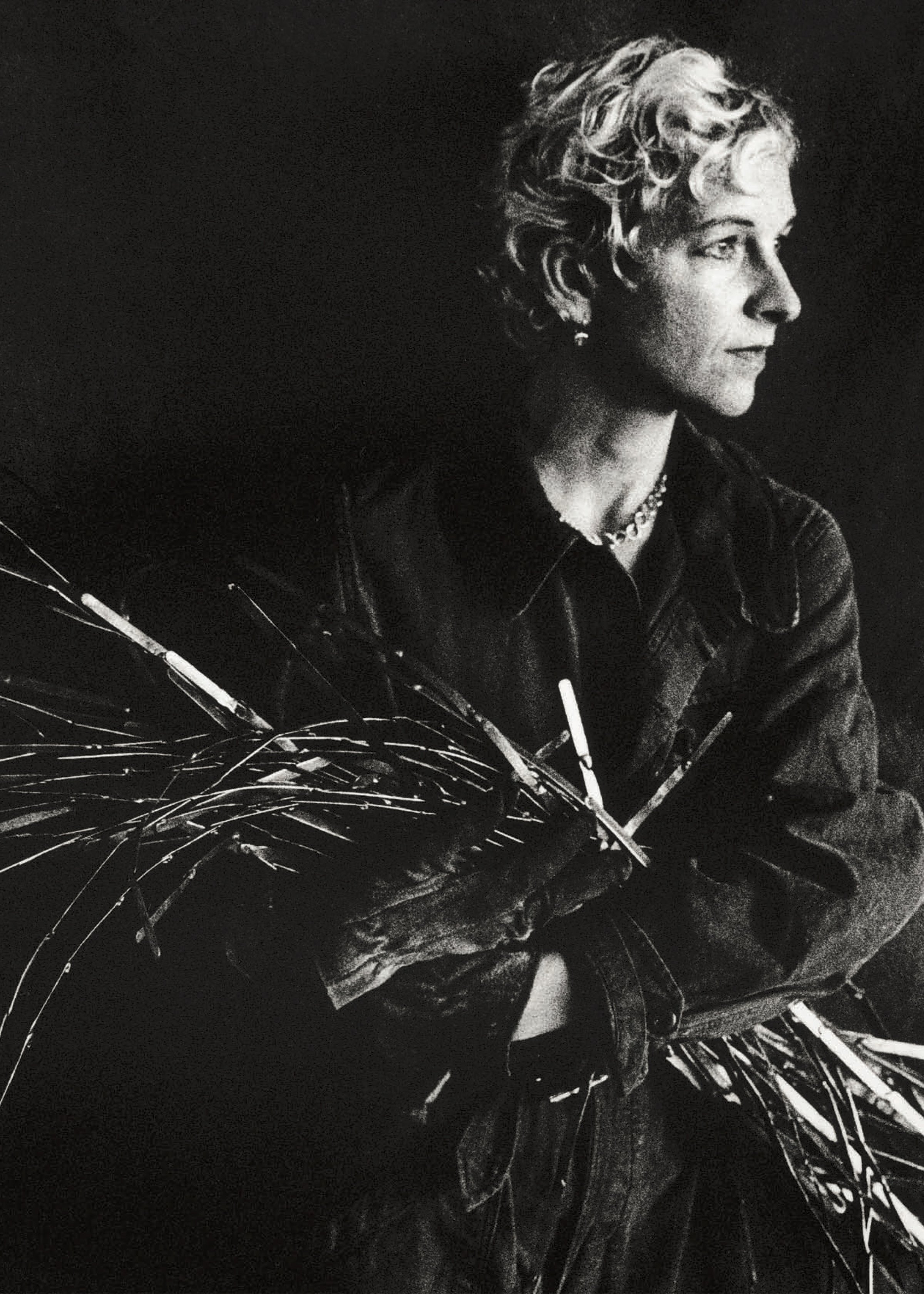profile of the artist: isabelle pelissier
For the creation of her series of oil paintings entitled “The Passengers,” Isabelle Pelissier bought 80 “totally banal” postcards of the Rio Chama in New Mexico. The postcards elicited only the most basic elements of the landscape–the river running from fore to back- ground through the center and the Southwestern desert flanking it on either side. Moved and baffled by the organic nature of the world, Pelissier fell into what she defines as a “self-hypnosis,” then proceeded to paint over the postcards, extending them, in a sense, from images dry and symmetrical to lush, penetrating miniatures. “The Passengers” series is actually shown together as one piece, and in viewing the paintings side by side, one gets the sense of constant movement–of seasons, of time, of weather and perspective–and in these varying attitudes the river and the landscape come alive in ways both pastoral and haunting.
“I like the size of postcards,” Pelissier explains in speaking about this medium (of which there are many) for her art. “The harmonious 5 by 7–it’s a good balance.” Pelissier has also done a series of these reimagined postcards entitled “Joan of Arc,” which were painted over Barbie invitation cards,“thinking of how many women’s faces were in my head, trying to give full range to them, and trying to find a face for Joan of Arc.” Pelissier estimates she has completed over 350 of these works.
Yet this is only one aspect of Pelissier’s visceral, eclectic art. Her studio at the Tri-Main Center in Buffalo is witness to the range and ambition of Ms. Pelissier. The tables and filing cabinets are packed with journals, notecards, photographs and collage. Tiny sculp- tures cobbled up out of all manner of materials, ranging from wooden blocks to plastic figurines to seeds and ropes, occupy the shelf space.
Much of these creations are representative of Pelissier’s obsession with mimicking and reflecting the natural world. An empty plant potter achieves a liveliness when arranged with wire and bead flowers. A handful of seemingly disparate images, when brought together in collage, becomes somehow organic. “When you walk in a landscape, it’s all mystery. And even with things as basic as a glass or a spoon. But I try to forget the subject and get into the rhythm of these things, putting them together until they create a little spark, a connection.”
In 1998 Pelissier began working with metal while living in Northern New Mexico. The metal sculpture swiftly became a new and integral part of Pelissier’s art, calling this medium “the last stage of ambient ideas.”
Among her metal works are various chairs which she began painting in the mid-1990’s and has since pursued in her sculpture. The chairs in one sense appear quite austere and post-modern, yet they equally convey a certain, albeit odd, sense of comfort and familiarity. “Chairs are kind of human,” Pelissier explains, and for this sentiment she achieves a quality of morbidity and curvature in their creation. “Metal is helping me to focus, because with steel you have to make certain choices you cannot take back. It [metal] is the synthesizing of ideas and making them more clear. With the rest of my work I want it to remain a little blurry.”
Pelissier’s draw to the organic nature of things extends as well into her sculpture. She has recently completed a sculpture that was commissioned by Nektar, a chic new restaurant/bar on Elmwood Avenue, in Buffalo, New York, and the tall colonnade of stainless steel flowers currently resides in its lobby. Steel vegetal forms are close to Ms. Pelissier’s mind right now. “There are lots of trees around here,” she explains, “and I think the movement of the leaves is one of the most beautiful things ever. I want to make things like this, the dynamics of free life, how things grow in Nature.”
Born in France, late to the game (she didn’t begin painting until she was 20 years old), and essentially self-taught, Pelissier nonetheless seems brimming with vitality and energy, in many ways reflective of the type of life she attempts to capture in her art. It is, as a fact, very hard to pin her work down, mainly because it so crucially depends on its own free-flowing, spontaneous process. Furthermore, Ms. Pelissier does not offer much help in this regard, and perhaps this is because there is none to give.
“I’m not that interested in ‘art.’ There are things that really make me react. A chemistry that draws you. Certain rhythms, people, colors that I’m drawn to. I don’t need much more than that to get me going. I have enough to deal with just looking at the sky.”
Isabelle Pelissier has held solo shows in Paris (Galerie Akram-Tessier, 1995), Santa Fe, New Mexico (Plan B/Evolving Arts, 1999), and Buffalo, New York (Cornershop, 2000), and has participated in several group shows, including an exhibition at the Buffalo Arts Studio in 2001.
In addition to the piece at Nektar, Isabelle Pelissier’s sculpture can presently be seen in the lobby of the Tri-Main Center at 2495 Main Street in Buffalo. This piece was chosen for the “Art Across Borders” exhibition, as a part of The Women’s Pavilion Pan Am Public Art Project, and is slated to move to an outdoor location on Main Street in the coming months.
Right now Ms. Pelissier is concentrating on several commissions that are pending, explaining that she likes commissions a great deal because “they make me try to be perfect, and I don’t like to be perfect.” Until they begin to come in, however, Ms. Pelissier will continue hammering away at all facets of her art. “I’m just trying to figure this life out–no big artist theory. This is how I’ve decided to live. It’s my way of having fun in life. It takes all of my time.”
in print discover issue three


